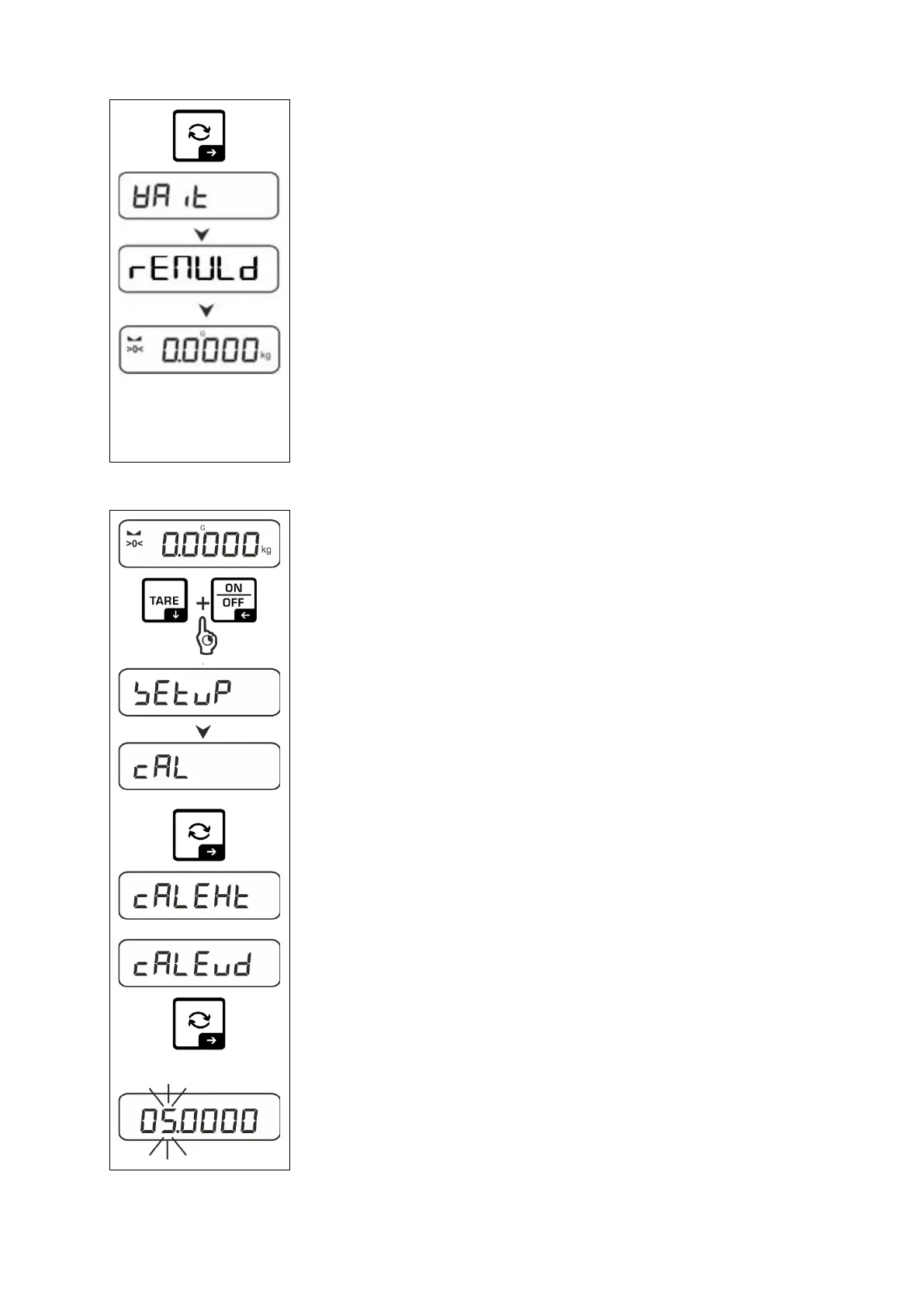

Do you have a question about the KERN FKB 36K0.1 and is the answer not in the manual?
Identifies the physical parts of the weighing scale, including the weighing pan, display, and keyboard.
Details the function and operation of the scale's buttons, keys, and display indicators.
Explains the intended purpose and correct usage of the balance.
Details incorrect or unsafe ways to use the balance and potential consequences.
Outlines conditions under which warranty claims are voided.
Covers regular checks of measuring properties and test weights for quality assurance.
Emphasizes the importance of carefully reading the operation manual before setup.
States that only trained staff should operate and maintain the appliance.
Instructions for checking the packaging and appliance for damage upon receipt.
Guidelines for keeping original packaging and preparing for return shipment.
Provides guidelines for selecting an appropriate and stable location for the balance.
Steps for removing the device from packaging and verifying its contents and condition.
Instructions for assembling parts, installing the balance, and ensuring it is level.
Details on connecting the balance to the power supply, including voltage checks.
Guidance on using the balance with batteries and replacing them.
Instructions and precautions for operating and charging the rechargeable battery pack, including charging procedures.
Information on connecting external devices like printers or PCs to the balance.
Steps for the first-time setup and warm-up of the balance.
Procedure for performing external calibration with a standard adjustment weight.
Procedure for performing external calibration using a user-defined adjustment weight.
Adjusting the balance based on its gravitational constant at the installation site.
Adjusting the balance based on the gravitational constant using a preset location value.
Instructions for starting up and shutting down the balance.
Step-by-step guide for performing a basic weighing operation.
Explains how to reset the balance to zero before weighing for accuracy.
Describes the process of taring to exclude container weight and measure net weight.
How to change between different available weighing units (e.g., kg, oz).
Procedure for using the balance for underfloor weighing with caution notes.
Guide on how to choose and switch between different operational applications.
Steps to change the active application mode of the balance.
Overview of settings available for the Weighing application.
Function to set the weight of a container as the tare value.
Manually inputting a known tare weight value into the balance.
Freezes the current stable weight reading on the display.
Calculates and displays the weight of a sample as a percentage of a reference weight.
Applies a multiplication factor to the weighing result for custom calculations.
How to enable and switch between different weighing units using the quick-change button.
How to set application-specific units like %, Pcs, FFA using the quick-change button.
Overview of settings for the Counting application, including reference quantity.
Step-by-step guide for performing piece counting, including setting reference quantity.
Procedure for checking quantities against defined tolerances using the counting function.
Overview of settings for Checkweighing, including upper and lower limit values.
How to perform checkweighing, including defining limit values and starting tolerance checks.
Explains how to navigate through the balance's menus using navigation buttons.
How to access and use the application-specific menus for quick selection.
Details on accessing and using the setup menu for global configuration and adaptation.
Explains the KCP protocol for communication with external systems and device control.
Function to sum individual weighing values into a total memory.
How to manually trigger data output after pressing the PRINT button.
Data output occurs automatically when specific conditions are met.
Setting an interval for continuous automatic data output.
Guidelines for cleaning the balance safely and effectively using mild agents.
Information on who can service the appliance and safety before opening.
Instructions for disposing of the appliance and packaging according to national regulations.
Lists common faults like display issues, changing weights, and incorrect results with potential causes.
Provides a list of error messages and their corresponding explanations for quick reference.